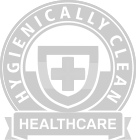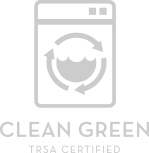3 Ways Our Commercial Laundry Operations Save Energy
When you picture a commercial laundry, you may envision a factory releasing extensive emissions into the atmosphere, not to mention the mass of water the factory is using to clean the linens. HandCraft is different.
Green initiatives and energy efficiency is important to us at HandCraft. We are passionate about the linen rental and commercial laundry business, but our passion only drives us to overcome obstacles to be able to do what we love. And one of the big obstacles that we are proud to continually overcome every day is the obstacle to saving energy.
We could write an entire post on our water use – we save more than 100 million gallons of water each year after all – but all our statistics are listed on our Green Initiatives page, and we think it would be more effective to tell you how our energy-saving process actually works.
Here’s what we’re doing to save energy:
1. We reclaim heat from our waste water and boiler discharge to warm incoming water for the wash process.

As you probably are well aware of, to heat up water for laundry, showers, the sink, etc., you need to use energy. But what about the water that goes down the drain? That water still contains heat.
Using a heat exchanger, we are essentially able to trap heat from that water and then use that heat to warm incoming water, as opposed to utilizing extra energy to heat it. This process helps us save substantially on energy costs.
2. Many of our linens are designed to be laundered in lower water temperatures.

Although we are able to recycle heat, the less energy and heat required, the more sustainable and efficient the laundering process will be. Especially because when recycling heat, you are not going to capture incredibly high temperatures. Therefore, to make the best use of recycled heat, linens should be washed at appropriate temperatures. Our linens are able to be washed sustainably while getting just as clean.
And because we don’t use excessive temperatures, damage and shrinking of linens is prevented. Therefore, we produce less waste because linens last longer.
3. Our delivery vehicle fleet is modified to ensure fuel efficiency and use DEF to decrease emissions.

Using GPS tracking, our fleet managers are able to alter delivery routes to avoid extended time out on the road due to traffic and adverse conditions. By being able to shorten our routes and make them more efficient, we reduce our fuel consumption.
Diesel vehicles risk emitting NOx, a toxic gas, into the air. Because of this, we use Diesel Exhaust Fluid (DEF) in a process called Selective Catalytic Reduction (SCR). Discover DEF says through this process, “DEF is sprayed into the exhaust stream of diesel vehicles to break down dangerous NOx emissions into harmless nitrogen and water.” Therefore, we can reduce emissions of dangerous gases into the atmosphere.
Work with a linen service who understands their impact on nature and will work with the environment instead of against it. Contact us at HandCraft today at 804-358-8671 to get started with a linen provider that cares.





